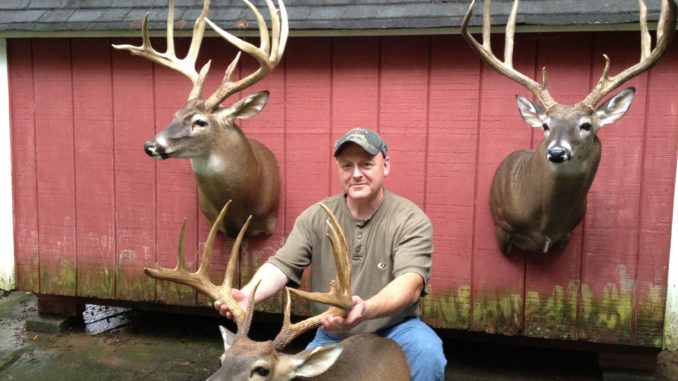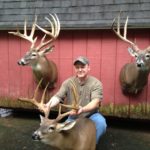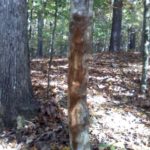
Use trail cams, don’t over-hunt and get out after the rain
Perhaps the most refreshing thing about Danny Dillard of Easley is that he used to be just like the rest of us when it came to deer hunting, and he knows it.
He’ll be the first to tell you that deer hunting always was a hit-or-miss proposition for him.
Nice deer were the result of an occasional stroke of good luck, big bucks were rarer still.
My, how things have changed for Danny Dillard.
The 55-year-old hunter has put eight bucks into South Carolina’s state record book in the past seven years, including the Palmetto State’s all-time No. 3 typical buck.
But you won’t find Dillard pounding his chest or shouting from his tree stand anytime soon. He also is refreshing because, unlike some hunters, he is humble almost to a fault when it comes to his deer-hunting accomplishments.
In fact, he downplays the eight sets of antlers that carry his name in the record book, and likely never would have had some of the racks scored had it not been for the repeated urging of friends and acquaintances.
“A lot of people know more than I know,” Dillard said. “Sometimes you just fall into things. I’m not the smartest hunter out there.”
Maybe not, but there’s no denying that Dillard is nothing if not diligent, disciplined and detail-oriented.
Dillard also admits that he’s been blessed with falling into a couple of prime hunting areas, with a private, 1,200-acre tract in upper Anderson County foremost among them. Dillard has taught the landowner about wildlife management; the landowner has taught Dillard about land management.
“It has worked out well,” Dillard said.
No question there. The landowner originally sought Dillard’s assistance in thinning out the deer on his property, where an over-populated herd was responsible for considerable damage to the landowner’s gardens and crops.
So Dillard focused simply on reducing the local deer population for the first few years.
“The whole idea going in was just to attempt to control the numbers,” Dillard said. “The trophy part of it is just a by-product of that.”
Dillard has succeeded on both counts.
“On a good day down there I might see five deer,” Dillard said. “We want low numbers and plentiful food so we can have healthy deer and the bucks can grow big because there’s less competition. The landowner is happy with it and I’m happy with it.”
Conditions are indeed perfect. The landowner grows soybeans, corn and green beans, among other crops, and Dillard has planted several food plots, typically consisting of mixes of soybeans and clover.
“I’m convinced that deer are like us — they want variety, stuff that’s palatable,” Dillard said. “I don’t think you need to feed them the same thing all the time.”
There’s diversity in the terrain and woods as well. The property includes a large pond, a swampy area and plenty of hardwood and pine stands.
“The best analogy is that it’s like baking a cake,” Dillard said. “You can follow a recipe and leave something out and still have a cake, but it’s not going to be as good as it could’ve been.”
It’s hard to imagine Dillard’s favorite hunting area missing any ingredients. The tract is isolated, and Dillard is the only hunter on the property, so pressure is minimal.
The lower density and outstanding genetics only add to the mix.
But Dillard has found hunting success elsewhere, too. While his Boone and Crockett buck came off the Anderson County tract, his second-best buck — a 164-inch 12-point that’s No. 14 all-time — was taken on public Wildlife Management Area land in Abbeville County in 2011.
In that instance, Dillard capitalized on a situation that at first blush would appear to be a negative for many landowners. The public land that Dillard honed in on bordered a hunt club with many members; the result was an over-hunted area populated by 4-wheelers that effectively drove deer off that property and directly toward Dillard.
“I found a prime location in thick woods with funnels and draws that the deer were using as travel corridors,” Dillard said. “The folks next door pushed them to me.”
And Dillard’s third-best trophy, which scored 155 5/8, was taken off a small private parcel of land in Edgefield County in 2013.
Regardless of where he’s hunting, Dillard enters big-buck lairs cautiously. His overriding philosophy could be best described as “minimally intrusive.”
“I have found that even the slightest amount of intrusion into their world will cause them to change their patterns and go nocturnal,” Dillard said. “I only hunt at certain times, under certain weather patterns and certain circumstances.
“You can easily over-hunt an area. If you have a good reason to be there, fine; if you don’t, stay away. I have seen it happen so many times. People will hunt an area over and over again until the deer change their patterns.”
Dillard also hunts exclusively out of climber-type stands or ground blinds, never out of a permanent stand, and he always flies solo.
“I want to be able to be mobile and get in and out of an area whenever I can,” Dillard said. “And at least for me, hunting solo is the best way to go. If something’s going to get messed up, at least you’re the one doing it.”
Which may explain why Dillard takes pains to be get in and out of the woods with minimal disturbance.
“When I come down out of a tree, I make sure to come down real slow and real quiet; there’s no banging around,” he said.
The bulk of Dillard’s hunting success has come during the October pre-rut period, he said, when bucks are still intent on maintain scrape lines, and later in the day.
“I’d say 99 percent of the bigger deer that I’ve harvested have come in late afternoon or early evening,” Dillard said. “Most hunters are just the opposite, hunting early in the morning, so that’s another reason I’m out there until dark.”
Dillard also believes he benefits from never hunting over his many food plots.
“I hunt back in the cover where they feel more secure,” Dillard said. “I want them to feel comfortable on the food plots.”
A big proponent of trail cameras, Dillard uses the now-widespread technology to identify what he refers to as potential “target bucks.”
A few years ago, Dillard said he wouldn’t pursue a buck unless it had eight points and would score an estimated 150 Boone and Crockett points or more; now he’s seriously considering upping his standards to 10 points and 160 points.
When Dillard is confident that there’s a trophy buck to be had, he begins honing in on the buck’s behavior.
“My main objective is to find his core area, where he’s bedding,” Dillard said. “If I can find his sanctuary, it tells me where he’s coming from and where he’s going. Once I figure out his travel pattern, I can set things up. Older deer, does and bucks alike, don’t like to get out of their comfort zone unless they absolutely have to. So I’m trying to make it as comfortable as possible for him.”
But it’s not all about bucks for Dillard, who regularly harvests does off the well-managed Anderson County tract that average 120 to 140 pounds.
“I still get excited every time, even if I’m just shooting a deer for the freezer,” Dillard said. “If I ever lose that excitement, it’s time for me to quit.”





Be the first to comment